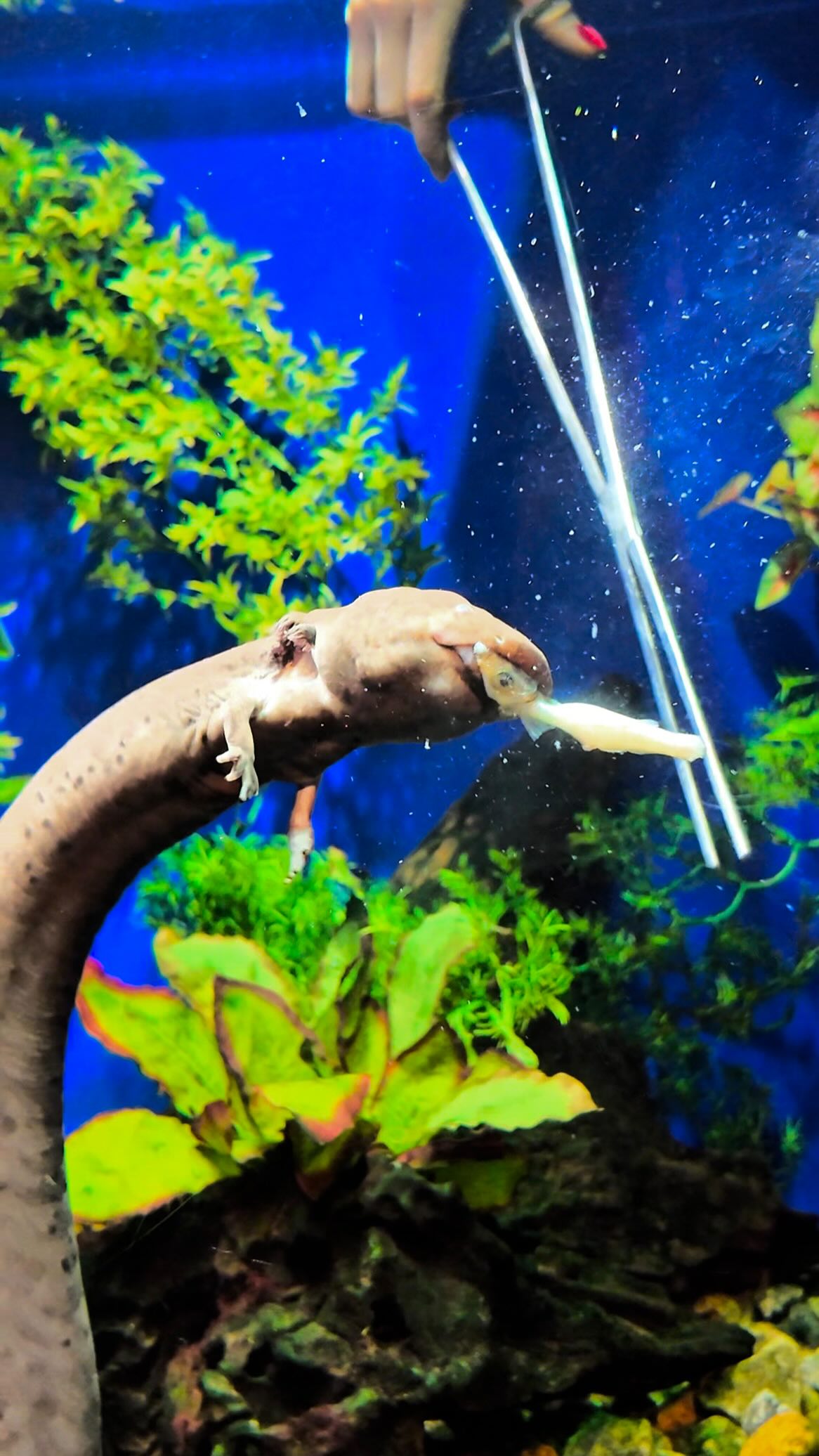- Comprehensive overview of greater sirens, emphasizing their physical characteristics and natural habitats.
- Detailed description of the feeding process and its significance in the care of aquatic amphibians.
- Role of animal caretakers like Natasha in maintaining the health and welfare of zoo animals, particularly greater sirens.
- Insights into the ecological importance and conservation status of greater sirens.
- Educational value and visitor experience at the zoo’s new Dragons exhibit featuring the greater siren, Ariel.
The greater siren, an intriguing aquatic amphibian, is a vital component of ecosystems in the southeastern United States. Known for their elongated, eel-like bodies, greater sirens measure between 49 to 98 cm in length, commonly reaching around 70 cm. These remarkable creatures lack hind limbs, possessing only a pair of small forelimbs adorned with four toes. Their external gills, feather-like and darkly colored, are prominent features allowing them to breathe efficiently underwater. This adaptation is critical, as greater sirens are primarily aquatic, inhabiting shallow, slow-moving waters such as swamps, ponds, and marshes.
Feeding the greater siren is a meticulous task integral to their care. Natasha, one of our dedicated animal caretakers, ensures the dietary needs of our resident greater siren, Ariel, are met. Today, Ariel feasts on smelt, a type of fish rich in nutrients essential for her growth and vitality. Proper nutrition plays a critical role in the overall health and well-being of these amphibians, influencing everything from their skin health to reproductive success. Regular feeding routines help monitor food intake, ensuring that each siren receives the appropriate nutritional balance. This consistency is crucial for maintaining health in captive environments.
Animal caretakers like Natasha are fundamental in the daily operations of zoological institutions. They provide hands-on care, ensuring the physical and mental well-being of animals under their supervision. Natasha’s role involves monitoring Ariel’s health, maintaining her habitat, and facilitating her dietary needs. The relationship between caretakers and animals is pivotal, influencing the success of breeding programs and the psychological welfare of animals in captivity. Trust and familiarity, developed over time, allow caretakers to detect subtle changes in behavior or appetite, serving as early indicators of health issues.
The greater siren plays an essential role in the ecosystem as a predator and a prey species. Their presence in the habitat helps control insect populations, contributing to the ecological balance. However, environmental threats such as habitat destruction, pollution, and climate change pose significant risks to their survival. Continued conservation efforts are imperative to safeguard their existence. Educating the public about these fascinating creatures and their habitats prompts a deeper understanding and appreciation, fostering conservation-minded attitudes among zoo visitors.
Our zoo’s newly introduced Dragons exhibit offers an immersive experience where visitors can observe Ariel, the greater siren. This exhibit educates attendees about the unique attributes and ecological roles of these amphibians, encouraging a connection with wildlife. Through informational displays and interactive sessions, visitors learn about the behaviors and adaptations of greater sirens. The aim is to inspire a fascination with amphibians and a commitment to their conservation, creating informed and enthusiastic stewards of nature.
Emphasizing the incredible capacity of these creatures to adapt and thrive in their specific environments highlights the need for ongoing conservation efforts. By participating in educational programs and engaging with exhibits like Dragons, visitors gain a broader perspective on the vital importance of biodiversity and the conservation of lesser-known species such as the greater siren. Through careful management and public education, institutions can foster an environment where both animals and humans flourish.
*****
Source Description
Let’s feed the greater siren with our animal caretaker, Natasha! 🦎
Today our greater siren, Ariel, is enjoying smelt 🐟
These amphibians can vary from 49 to 98 cm long (19 to 38 in), while most measure an average 70 cm (27.5 in)!
You can see a greater siren for yourself in our new Dragons exhibit 🌟


